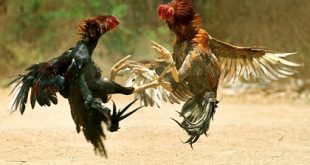Gorillas are remarkable creatures, often regarded as one of humanity’s closest relatives due to the extensive genetic similarities we share. These majestic primates are the largest of all apes and are primarily found in the tropical forests of central and eastern Africa. To understand their behavior, survival mechanisms, and how they thrive in their environment, it is essential to examine their anatomy, focusing on specific body parts and their functions. This article will delve into the critical body parts of a gorilla, analyzing how these parts contribute to their survival and overall adaptation to their habitats.

1. Hands: Adapted for Precision and Strength
Gorilla hands are incredibly similar to those of humans, featuring five fingers, including an opposable thumb. This opposable thumb enables them to grasp, manipulate objects, and perform tasks requiring precision. Gorillas use their hands for various purposes:
- Feeding: Gorillas use their hands to pluck leaves, fruit, and stems. Their dexterity allows them to choose specific parts of plants they prefer, such as tender shoots.
- Tool Use: Although not as frequent as in chimpanzees, gorillas have been observed using tools in the wild. For example, they use sticks to gauge water depth or as makeshift support.
- Knuckle-Walking: A distinctive feature of gorilla locomotion is knuckle-walking. Gorillas use their fingers, specifically the knuckles, to support their body weight as they move. This form of locomotion protects the palms and ensures stability on uneven terrains.
The combination of strength and precision in their hands is a testament to their evolutionary adaptability, allowing them to thrive in dense forest environments.
2. Arms: Built for Power and Mobility
A gorilla’s arms are exceptionally long, often reaching lengths greater than their legs. Their arm span can exceed 2.5 meters (8 feet), giving them a robust, imposing appearance. These long and muscular arms are critical for their daily activities:
- Climbing: Despite their size, gorillas are agile climbers. Their powerful arms enable them to scale trees in search of food or for shelter.
- Defense: When threatened, gorillas use their arms to display dominance or ward off predators. Their ability to pound their chests with force demonstrates their strength and can intimidate rivals.
- Mobility: While primarily ground-dwelling, gorillas’ arms play a significant role in their knuckle-walking, allowing them to move efficiently.
The sheer power of their arms underscores their role as a key survival tool in their natural habitat.
3. Chest and Shoulders: The Core of Strength
The chest and shoulder muscles of a gorilla are immensely developed. This robust upper body strength allows gorillas to perform physically demanding tasks such as:
- Combat: Male gorillas, especially dominant silverbacks, rely on their chest and shoulder strength during fights to assert dominance or protect their troop.
- Lifting and Carrying: Gorillas can lift objects weighing several hundred kilograms, showcasing their impressive muscle capacity.
The chest-beating display, often observed in silverbacks, is not just an intimidation tactic but also a communication tool to signal strength and establish hierarchy within the group.
4. Legs: Support for Ground-Dwelling Lifestyle
Though shorter than their arms, gorilla legs are robust and muscular, supporting their weight and providing stability. Their legs play a vital role in their movement and posture:
- Knuckle-Walking Support: The strength in their legs complements their arm movements during knuckle-walking.
- Occasional Bipedalism: While gorillas primarily move on all fours, they can stand and walk on two legs for short distances. This ability is often observed when they carry food or objects.
The structure and function of their legs enable them to navigate the forest floor effectively, ensuring their survival in dense jungle environments.
5. Head and Jaw: Engineered for a Vegetarian Diet
The head of a gorilla, particularly the jaw and teeth, is adapted for their primarily herbivorous diet. Key features include:
- Large Jaw Muscles: Gorillas have pronounced jaw muscles, supported by a bony ridge on the top of their skull known as the sagittal crest. These muscles allow them to chew tough plant material, such as bark and fibrous stems.
- Teeth Structure: Gorillas’ teeth are specialized for grinding plant material. They possess large molars for grinding and incisors for stripping leaves and fruit.
- Communication: Their facial muscles allow a wide range of expressions, which are essential for communication within their social groups. They use these expressions to convey emotions, from playfulness to aggression.
The head and jaw are not only tools for feeding but also integral to their social interaction and survival.
6. Eyes and Vision: Sharp Senses in Dense Forests
Gorillas have forward-facing eyes that provide them with excellent binocular vision and depth perception. This is particularly important for:
- Navigating Forests: Their vision helps them judge distances accurately, a vital skill when moving through dense vegetation or climbing trees.
- Social Interaction: Eye contact and visual cues are crucial for communication within the troop. Dominance, submission, and playfulness are often conveyed through subtle eye movements.
Their vision, combined with other senses, helps them remain alert to their surroundings, detect predators, and maintain social bonds.
7. Heart and Lungs: Built for Endurance
Given their large size and physically demanding lifestyle, gorillas possess powerful cardiovascular and respiratory systems. These systems support:
- High Energy Demands: Gorillas require a substantial amount of energy to sustain their muscular bodies, which their robust heart and lungs provide.
- Vocalization: Gorillas communicate through a variety of vocalizations, from grunts to roars. Their lungs play a critical role in producing these sounds.
8. Skin and Fur: Protection and Insulation
The thick skin and dense fur of a gorilla are essential adaptations to their environment:
- Temperature Regulation: Gorillas living in cooler mountain regions, like the mountain gorilla, rely on their thick fur for insulation.
- Protection: Their skin and fur provide a barrier against insect bites and minor injuries as they move through dense vegetation.
Conclusion
Every body part of a gorilla is a testament to their evolutionary adaptability. From their powerful hands and arms to their specialized jaw and teeth, each anatomical feature serves a specific purpose, enabling them to survive and thrive in their natural habitats. Understanding these body parts and their functions not only highlights the intricate design of gorillas but also underscores their importance as a species worth protecting. As we continue to study these fascinating primates, it becomes increasingly clear how closely linked we are to them, not only genetically but also in the way their anatomy reflects survival, intelligence, and adaptability.


